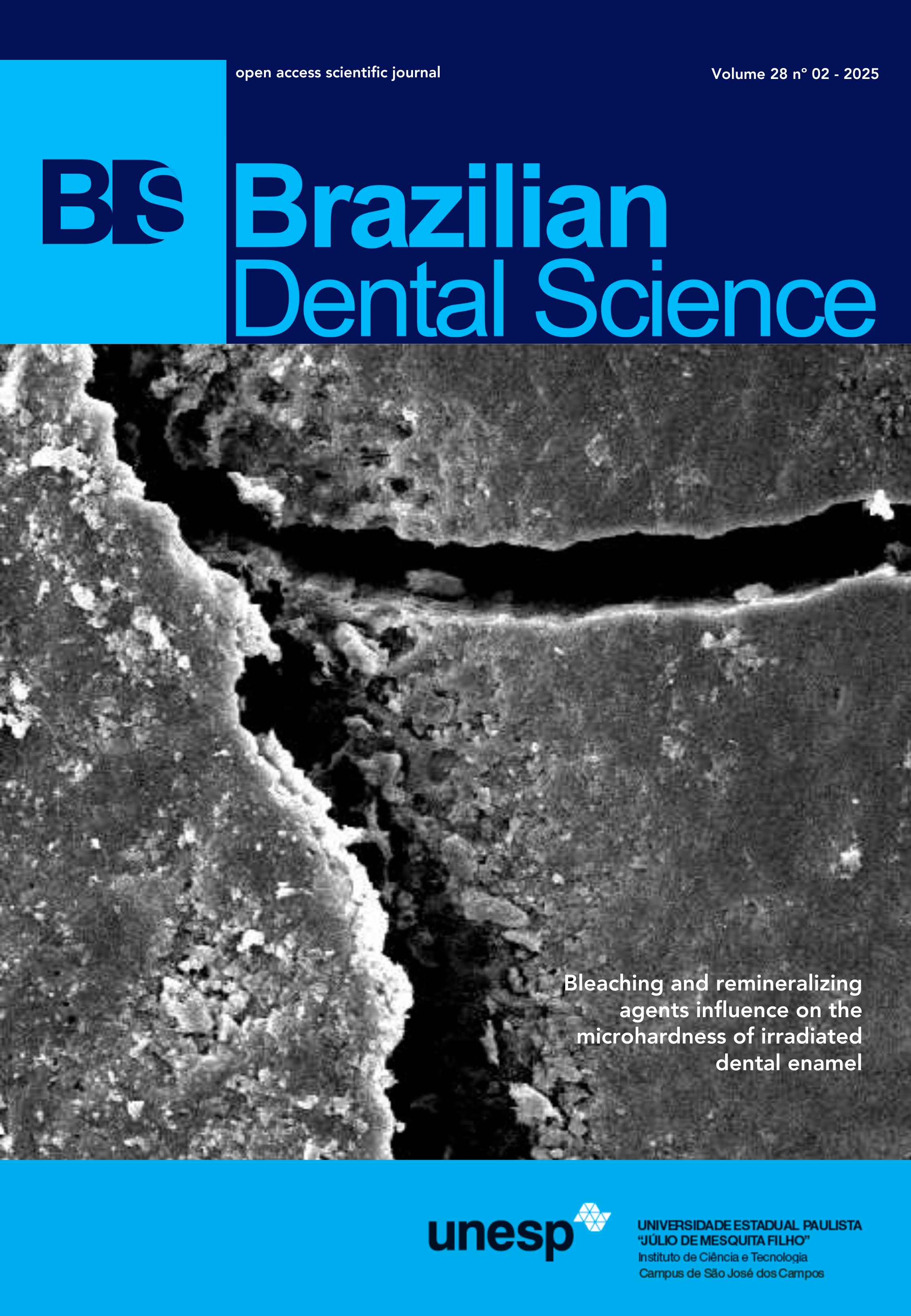Modalities of in-person and emergency remote teaching: perception and experiences of dentistry undergraduates
DOI:
https://doi.org/10.4322/bds.2025.e4669Abstract
Objective: The COVID-19 pandemic brought significant changes to people’s daily lives, necessitating adaptations to social distancing and human activities. Among these changes, education had to adjust to minimize losses and continue the teaching-learning process. This adjustment included the adoption of technology tools, Information and Communication Technologies (ICT), and distance learning practices, requiring both students and faculty to adapt to this new reality to maintain their activities. This study aimed to investigate, from the perspective of dentistry undergraduates, the differences between courses taught remotely during the pandemic and their return to these courses as in-person teaching assistants. Material and Methods: A structured interview was conducted, with questions addressing the challenges faced during remote learning and the perceived differences in monitoring these same courses in the in-person modality. Both descriptive and inferential analyses were performed, including the Chi- square test of independence and Chi-square partitioning, with a significance level of $\alpha$ = 0.05. Results: Among the difficulties reported, 76.7% of respondents mentioned concentration issues due to home environment factors, and 70% stated that emergency remote learning significantly affected their mental health. However, 53.3% of students expressed satisfaction with the courses taken through remote learning, and only 13.3% reported dissatisfaction. In the students’ perception, the in-person modality is more effective and beneficial. Conclusion: The results of this research enabled an evaluation of the distance education provided and the utilization of the best tools identified by both students and the institution. This evaluation can help address potential gaps or deficiencies in learning generated by distance education in dentistry.
KEYWORDS
Covid-19 pandemic; Dental education; Dentistry students; Distance Education; Higher education institution.
Downloads
Downloads
Published
How to Cite
Issue
Section
License
Copyright (c) 2025 Yasmin Karoline Nicolau Gouveia, Isis Moraes Cançado, Tais de Souza Barbosa, Fernanda Alves Feitosa, Ana Amélia Barbieri, Symone Cristina Teixeira

This work is licensed under a Creative Commons Attribution 4.0 International License.
Brazilian Dental Science uses the Creative Commons (CC-BY 4.0) license, thus preserving the integrity of articles in an open access environment. The journal allows the author to retain publishing rights without restrictions.
=================




























